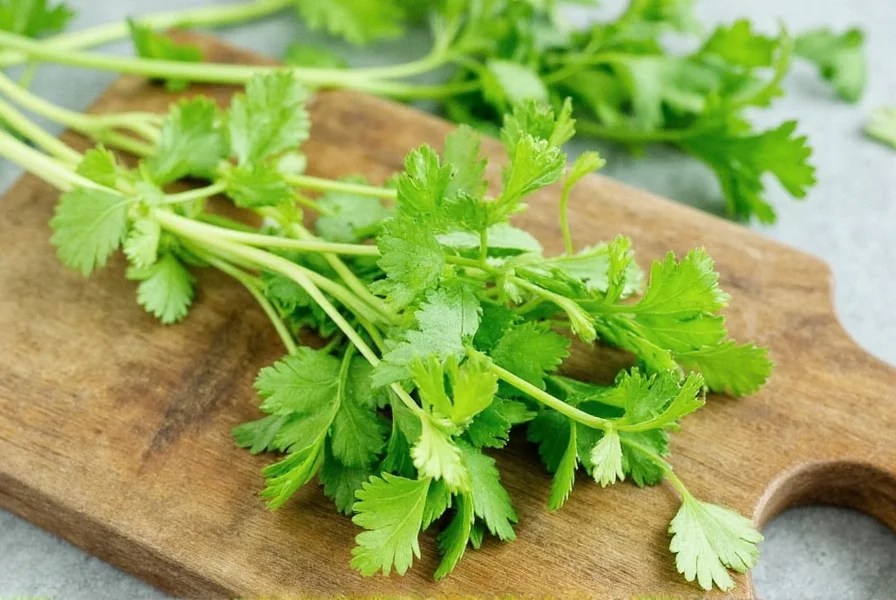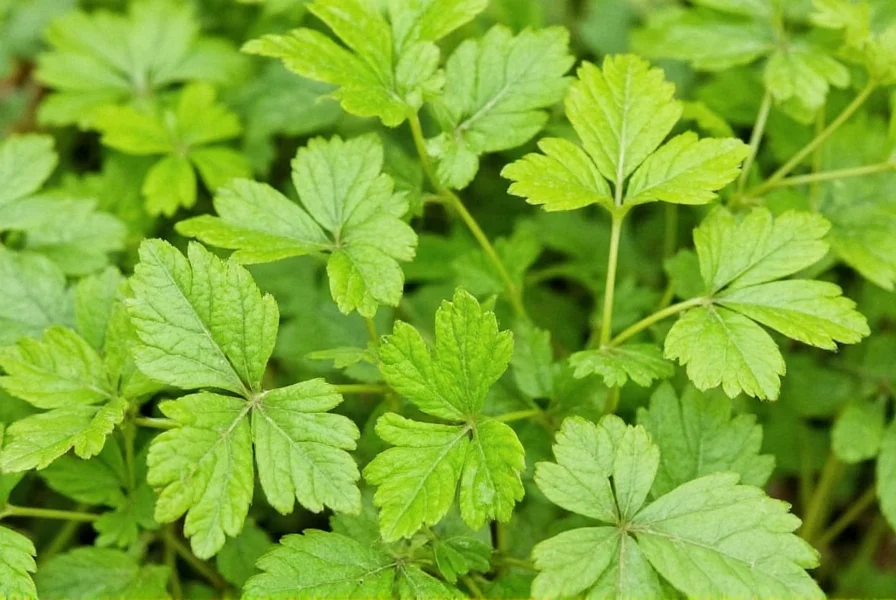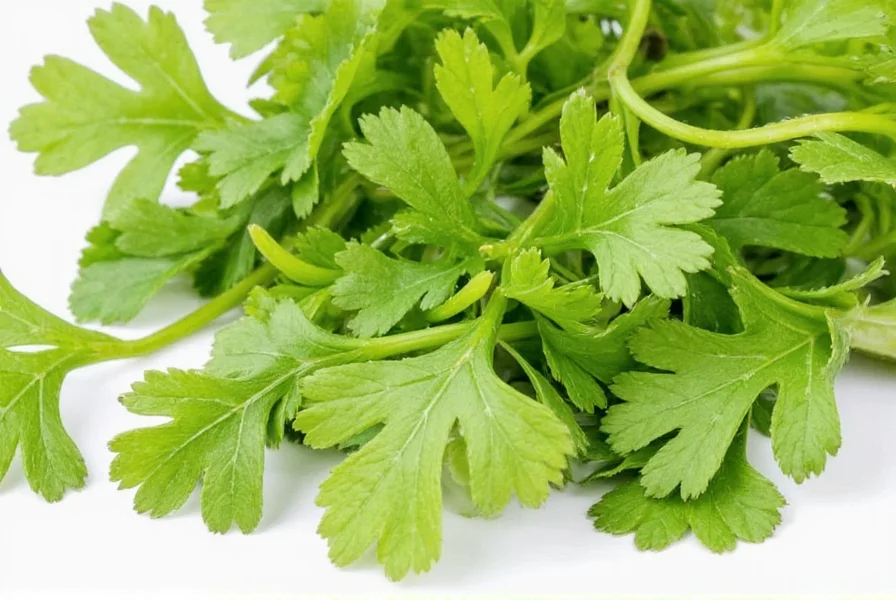Understanding what does coriander taste like requires examining both its objective flavor profile and the subjective experiences influenced by genetics. This versatile herb offers a complex sensory experience that varies significantly from person to person, making it one of the most polarizing ingredients in global cuisine.
The Distinctive Flavor Profile of Fresh Coriander
Fresh coriander leaves, commonly called cilantro in the United States and Canada, deliver an immediate burst of citrus notes reminiscent of lemon or lime peel. The herb contains natural compounds called aldehydes that create this characteristic brightness. When properly harvested and used fresh, coriander provides:
- A clean, green aroma with citrus undertones
- A slightly peppery finish on the palate
- Subtle earthy notes that complement its brightness
- A refreshing quality that enhances rather than overwhelms
The specific taste experience of fresh coriander leaves taste description varies based on growing conditions, harvest time, and freshness. Younger leaves tend to have a milder, sweeter profile, while mature leaves develop more pronounced citrus notes with a slightly stronger finish.
Why Some People Think Coriander Tastes Like Soap
The soapy taste perception associated with coriander affects approximately one in five people worldwide. This phenomenon stems from genetic variations in olfactory receptor genes, particularly OR6A2, which makes certain individuals more sensitive to the aldehyde compounds naturally present in coriander.
| Population Group | Percentage Reporting Soapy Taste | Genetic Predisposition |
|---|---|---|
| East Asian populations | Up to 25% | Higher prevalence of sensitivity gene |
| People of African descent | Approximately 14% | Moderate prevalence |
| European descent | Approximately 17% | Moderate prevalence |
| Hispanic populations | Approximately 21% | Higher prevalence |
This genetic variation explains why why does coriander taste like soap to me is such a common question among home cooks and food enthusiasts. The same compounds that create the desirable citrus notes for most people trigger soap-like perceptions in those with the specific genetic marker.
Coriander Leaves vs. Coriander Seeds: A Tale of Two Flavors
Many people don't realize that coriander refers to both the fresh herb (leaves and stems) and the dried seeds of the same plant (Coriandrum sativum). The flavor profiles differ dramatically:

While the fresh leaves deliver that characteristic citrusy brightness, coriander seeds offer a completely different sensory experience. When whole and raw, the seeds have a mild, nutty flavor. Toasting enhances their warm, slightly citrusy notes with hints of sage and lemon. Ground coriander seed becomes a key component in many spice blends, contributing earthy warmth rather than the fresh brightness of the leaves.
Understanding difference between coriander leaves and seeds taste is crucial for proper culinary application. Substituting one for the other will dramatically alter a dish's flavor profile.
How Cooking Affects Coriander's Flavor
Heat transforms coriander's flavor profile significantly. When added to hot dishes, fresh coriander leaves lose their bright citrus notes within minutes, developing more earthy, almost grassy characteristics. For this reason, culinary experts recommend adding fresh coriander at the very end of cooking or using it as a garnish to preserve its distinctive flavor.
Conversely, coriander seeds benefit from heat application. Toasting whole seeds before grinding releases their essential oils, enhancing their warm, citrusy notes while reducing any potential bitterness. This how cooking changes coriander taste principle explains why many traditional recipes specify whether to use fresh leaves or dried seeds.
Cultural Perspectives on Coriander Flavor
Cultural exposure significantly influences how people perceive coriander's taste. In regions where coriander features prominently in traditional cuisine—such as Mexico, India, Thailand, and the Middle East—people often develop a preference for its flavor despite any genetic predisposition to find it soapy.
Studies suggest that repeated exposure can help individuals overcome the soapy perception, making how to get used to coriander taste a relevant consideration for those who initially dislike the herb. Chefs often recommend starting with small amounts mixed with other strong flavors before gradually increasing usage.
Maximizing Coriander's Flavor in Your Cooking
To best experience what coriander tastes like in its most appealing form, follow these professional tips:
- Use fresh coriander within 2-3 days of purchase for optimal flavor
- Store stems down in water (like flowers) and cover loosely with a plastic bag
- Add fresh leaves at the very end of cooking or as a garnish
- Use the entire plant—stems have concentrated flavor ideal for salsas and marinades
- Pair with ingredients that complement its citrus notes: lime, garlic, chilies, and cumin
For those who perceive the soapy notes, try these approaches to how to make coriander taste better if you hate it:
- Finely chop and mix with acidic ingredients like lime juice which can neutralize the aldehydes
- Blend into sauces or salsas where other flavors balance the profile
- Try roasted coriander seeds instead of fresh leaves for a completely different flavor experience
- Gradually increase exposure in small amounts to potentially retrain your palate
Common Questions About Coriander's Taste
Frequently Asked Questions
Is coriander supposed to taste like soap?
For approximately 21% of the population, coriander does taste like soap due to a genetic variation that makes them more sensitive to certain aldehyde compounds in the herb. This is a scientifically documented phenomenon and not just a matter of personal preference.
Why does coriander taste different to different people?
Genetic differences in olfactory receptors, particularly the OR6A2 gene, cause variations in how people perceive coriander's flavor. Cultural exposure and repeated consumption can also influence how someone experiences coriander's taste over time.
Does cooking change how coriander tastes?
Yes, cooking significantly alters coriander's flavor profile. Heat causes the volatile compounds responsible for its citrus notes to dissipate quickly, leaving more earthy flavors. This is why fresh coriander is best added at the end of cooking. Coriander seeds, however, develop richer, warmer flavors when toasted before use.
How is coriander different from parsley?
While similar in appearance, coriander has a distinctive citrusy flavor with potential soapy notes for some people, whereas parsley offers a more neutral, grassy taste. Coriander's flavor is much more pronounced and can dominate a dish, while parsley serves as a more subtle herbal accent.
Can you get used to the taste of coriander if you dislike it?
Many people who initially dislike coriander due to the soapy perception can learn to enjoy it through repeated exposure. Starting with small amounts mixed with strong complementary flavors like lime and garlic, and gradually increasing usage, can help retrain your palate over time.












 浙公网安备
33010002000092号
浙公网安备
33010002000092号 浙B2-20120091-4
浙B2-20120091-4